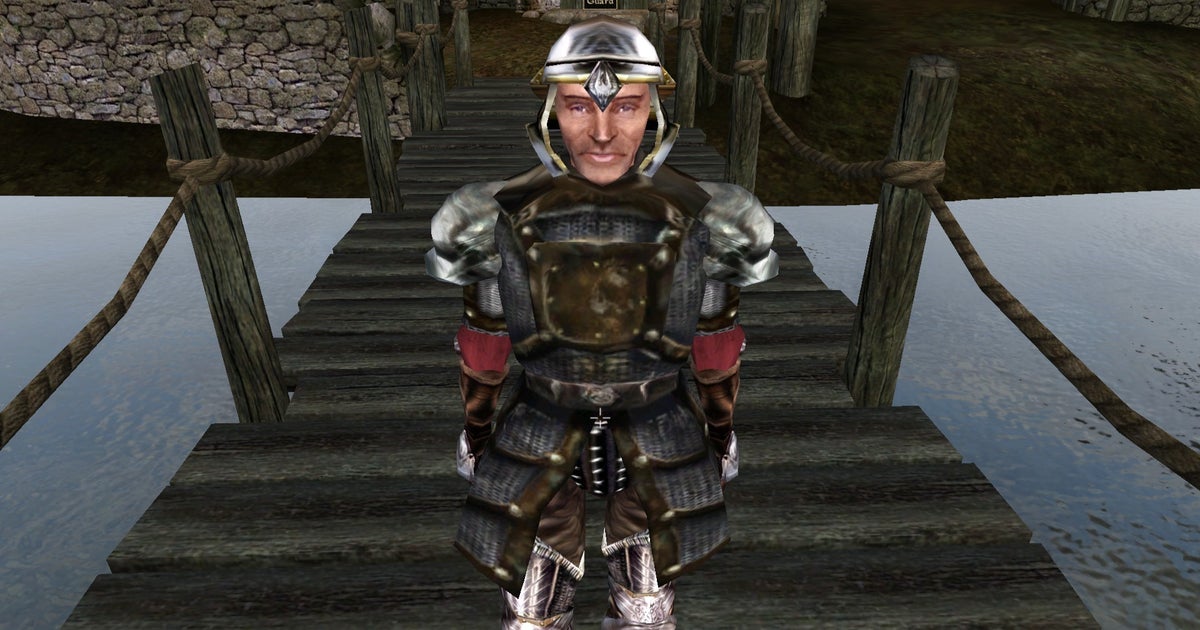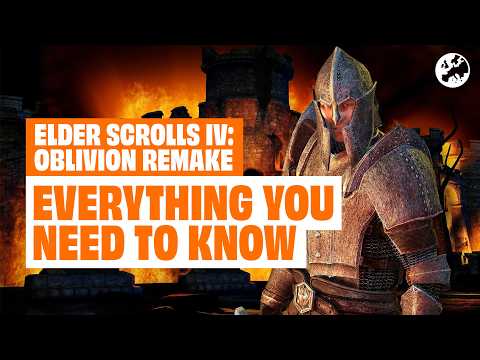At this point, who knows if the much teased Oblivion remake or remaster is happening. At times it seems an official announcement is all but imminent, at other times it seems like a load of Trust Me Bros on Reddit are just making it up. The rumour mill has been swirling with it since at least 2016. My theory is that Todd Howard has a Prince-style vault that he keeps all this stuff in, and there’s a fully playable remaster in there somewhere that won’t see the light of day until, you know. But he seems like a man who looks after himself, so he’s definitely gonna outlive me, you, and probably western civilization.
What is certain, though, is that it’s a no-brainer: Oblivion is a hugely popular and fondly remembered game, the one that made Bethesda a household name, and arguably represents the point where the seventh generation truly arrived, kicking off a golden era of Western role-playing games that we’re still enjoying today.But among old-school Elder Scrolls fans, Oblivion is seen as something of a let down, especially as a follow up to their darling Morrowind, which released way back in 2002 and laid much of the groundwork for what would become the hugely successful Bethesda template that we know and sometimes love, sometimes hate today. Seriously, every Bethesda game since Morrowind is more or less a reworking of Morrowind: from Fallout 3 to Starfield, the basic framework, game loop, and even underlying technology is all rooted in that groundbreaking release.
When you compare it to the much more grounded fantasy fare of Oblivion and Skyrim, Morrowind stands out as feeling most like an alien world: it’s a small island that feels massive, partly because of its public transport-based fast travel system that works more like the London Underground than the magic one-click solution of more recent games, but also because of how much the landscape completely changes between its various regions. The river city of Balmora feels almost mediterranean, the grand capital of Vivec stretches upwards with its vast cantons, there are mage towns grown from magic trees, and an entire settlement inside the hollowed out shell of a gigantic emperor crab.
In contrast, the Cyrodiil of Oblivion just sort of looks like any generic fantasy realm. Thatched roofs, leaded windows, churches and village greens that wouldn’t look out of place in Somerset or Surrey. And grand medieval castles that are so familiar looking it’s a wonder the National Trust hasn’t put in a bid for them. The game’s most major settlement, the Imperial City, with its impossibly tall White Gold Tower is Oblivion’s most recognisable landmark, but as grandiose as it looks in screenshots, the reality is disappointing: this is supposed to be a Tamrielic Rome, and yet it amounts to a handful of streets walled off from the rest of the landscape, and one of the least interesting places in the game to actually explore.
Which massively contradicts what the lore says about it:
From the shore it is hard to tell what is city and what is Palace, for it all rises from the islands of the lake towards the sky in a stretch of gold. Whole neighborhoods rest on the jeweled bridges that connect the islands together. Gondolas and river-ships sail along the watery avenues of its flooded lower dwellings. Moth-priests walk by in a cloud of ancestors; and the newly arrived Western legionnaires sweat in the humid air. The river mouth is tainted red from the tinmi soil of the shore, and river dragons rust their hides in its waters. Across the lake the Imperial City continues, merging into the villages of the southern red river and ruins left from the Interregnum.
The Imperial City as described in the Pocket Guide to the Empire, as far back as 1998.
Oblivion players will know that it bears little resemblance to the capital we actually got to explore in The Elder Scrolls 4, which was much more reminiscent of a Gondorian walled city from Peter Jackon’s Lord of the Rings than the almost Amazonian metropolis conjured up by a source that is, in fairness, of dubious canonicity. Given that those were the biggest films going during Oblivion’s development, it’s not hard to deduce where Todd’s head was at.
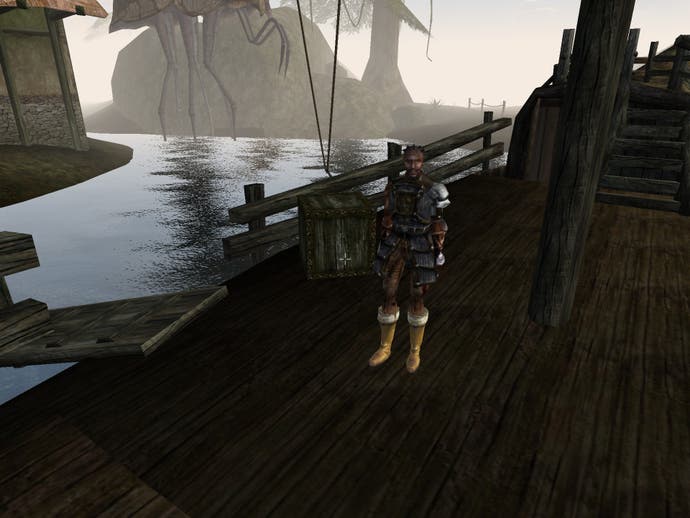
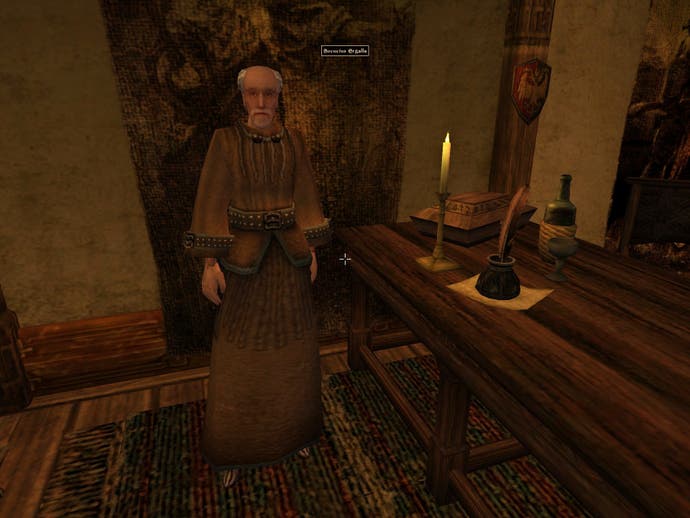
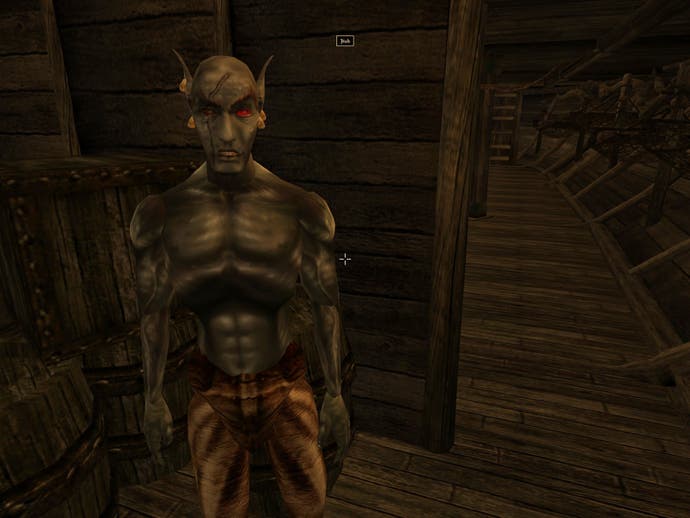
What I’m getting at here is that Oblivion, on paper, isn’t all that interesting. The setup is a drab rehash of basic fantasy tropes. And though there are some standout quests, like The Dark Brotherhood storyline, and various one shots that are dotted around, what makes it truly memorable and distinct is its weird look and its jank: the spaces where its interlocking systems don’t quite fit together, and where silliness happens. NPCs having endless conversations about mud crabs while generally looking like sentient yams. Physics glitches that can cause an entire shop’s worth of objects to explode in a hundred directions while the shopkeeper just stands there, blinking. Its distinctly early seventh-gen look, all those Crayola primary colours and excessive bloom lighting. Its terrible menus that betray a studio unused to designing controller interfaces and more or less ballsing it up – it was as unwieldy for PC users as it was for Xbox and PlayStation players.
But on Xbox and PC at least, it remains eminently playable – it’ll run at a crisp 4K60 on Series X, looking as gorgeously ugly as ever, and more or less still fitting modern expectations with how it controls, how it plays etcetera. Skyrim players and Fallout 4 players should have no issue getting to grips with it. Even though I would be at the head of the queue of Elder Scrolls-starved players to play a remake or remaster, one is scarcely needed, and I worry that if you “fix” the visuals and/or revamp any of its underlying systems, you risk destroying the soul of the thing. It would take a delicate hand to not ruin it, in the same way that those stupid fan-made Unreal Engine remakes of Nintendo games always desperately miss the point.
Morrowind, however, is a much more difficult game to recommend nowadays. It’s a bit like the RPG equivalent of Babylon 5: a beloved, foundational work that massively influenced everything that came after it. But you had to be there to fully appreciate how exceptional it was at the time.
“Oblivion is brilliant because of its quirks and foibles, whereas Morrowind is brilliant in spite of them”
In 2025, Morrowind is a hard sell. It isn’t fully voiced like its sequels, and most of the story is told through wiki-style text dialogues you have to sit and read. And they’re long. And they impart a lot of important information you might not remember later. There are no quest markers, as modern gamers would frankly expect. Directions are given in a fashion similar to that thing that used to happen before satnav, where your dad would flag down a pedestrian and actually ask them how to get somewhere nearby, and it would be a load of vague nonsense like “first left here, second right there, then down the lane until you see a bush that looks like Bob Holness eating prunes”. Die-hards would insist that the lack of granular quest-tracking and modern handholding is the entire point of Morrowind, but I would argue that I am a time-poor 40-something who would like to play it again before I die but without needing a spare 300 hours just to navigate the map.
The combat, too, is atrocious. There’s no heft or gravity to the melee, no physics simulation of any kind: things which are vital to the core gameplay of its sequels and stablemates. Under the hood it’s doing much the same RPG maths as the other games, but the actual feel of it is like trying to swat a fly with a soggy baguette. Stabbing and swishing impotently at thin air, with a magic system that is treated as almost entirely separate to melee and therefore useless in the heat of battle if you want to use both strength and mana. There is so much more about Morrowind that is in dire need of overhauling or replacing, and unlike Oblivion, the story and environment are deeply compelling when considered on their own.
Morrowind is a special game, where a beautifully unique fantasy setting is locked away behind technology and interface design that has aged particularly badly. I love it warts and all, as much as I love Oblivion warts and all, but I find the latter much easier to recommend for the simple fact that Oblivion is brilliant because of its quirks and foibles, whereas Morrowind is brilliant in spite of them. As a long time fan of the series, and Bethesda games in general, I would be overjoyed at the chance to experience Morrowind’s intricate stories and factional quarrels in a new and modernised way. But the prospect of a revamped Oblivion leaves me cold: you can’t fix it without killing it.
